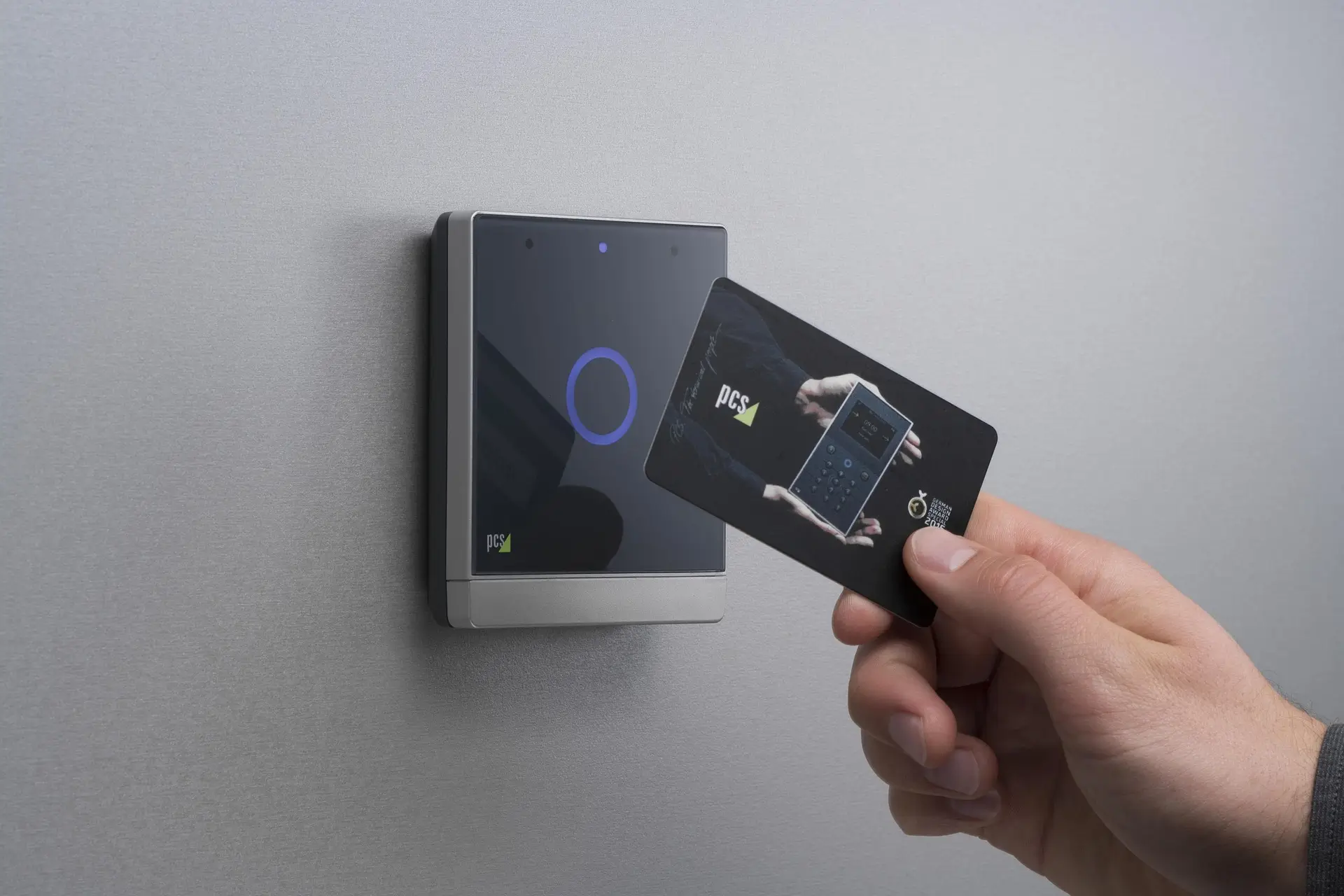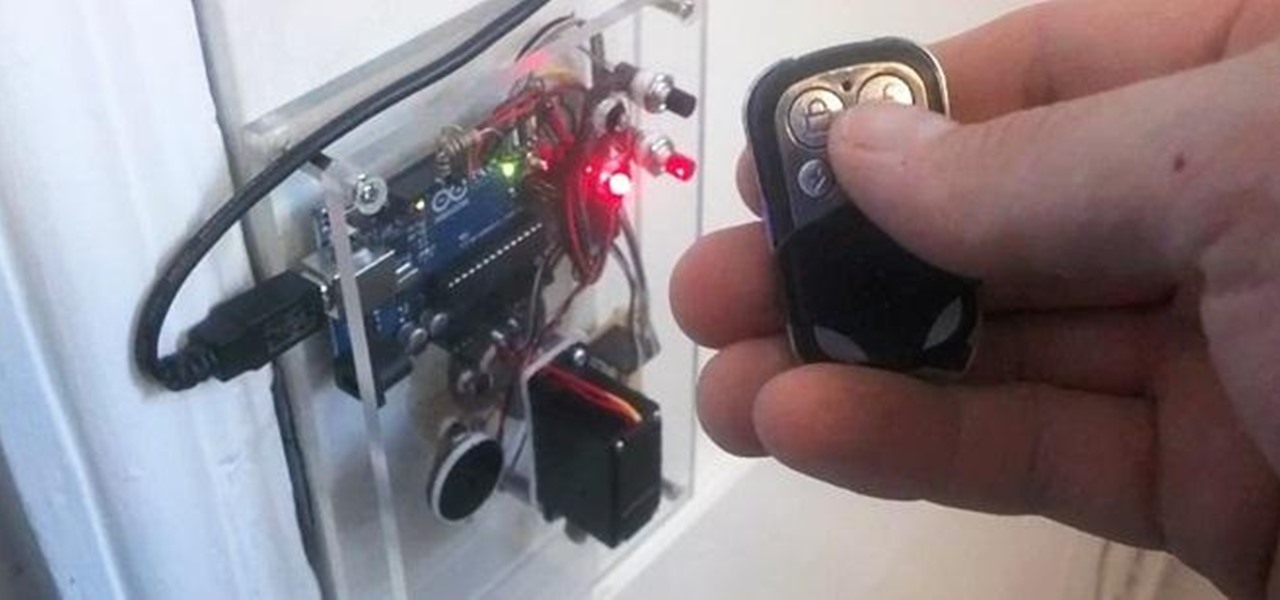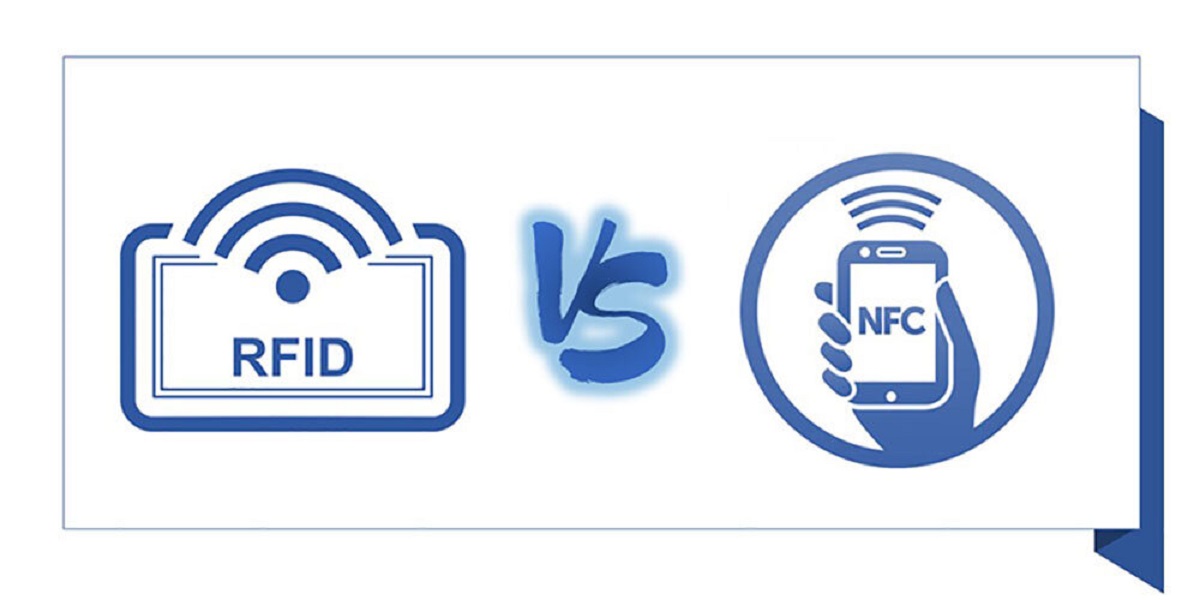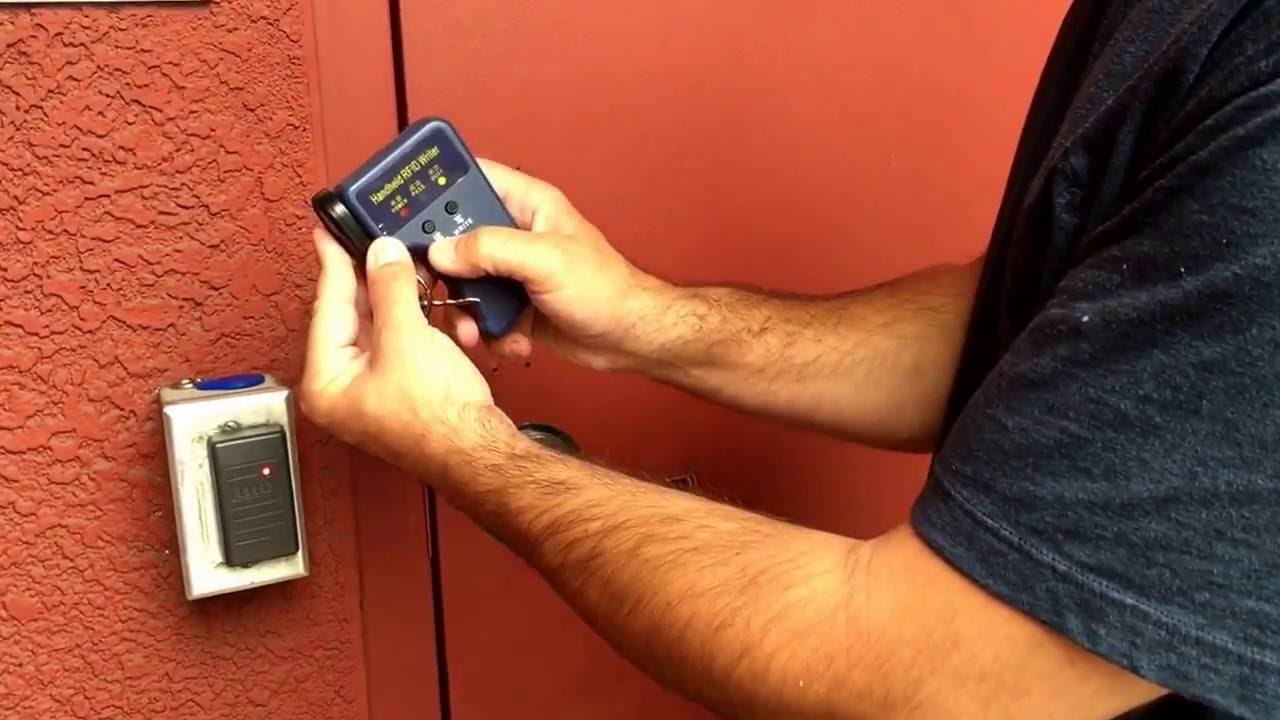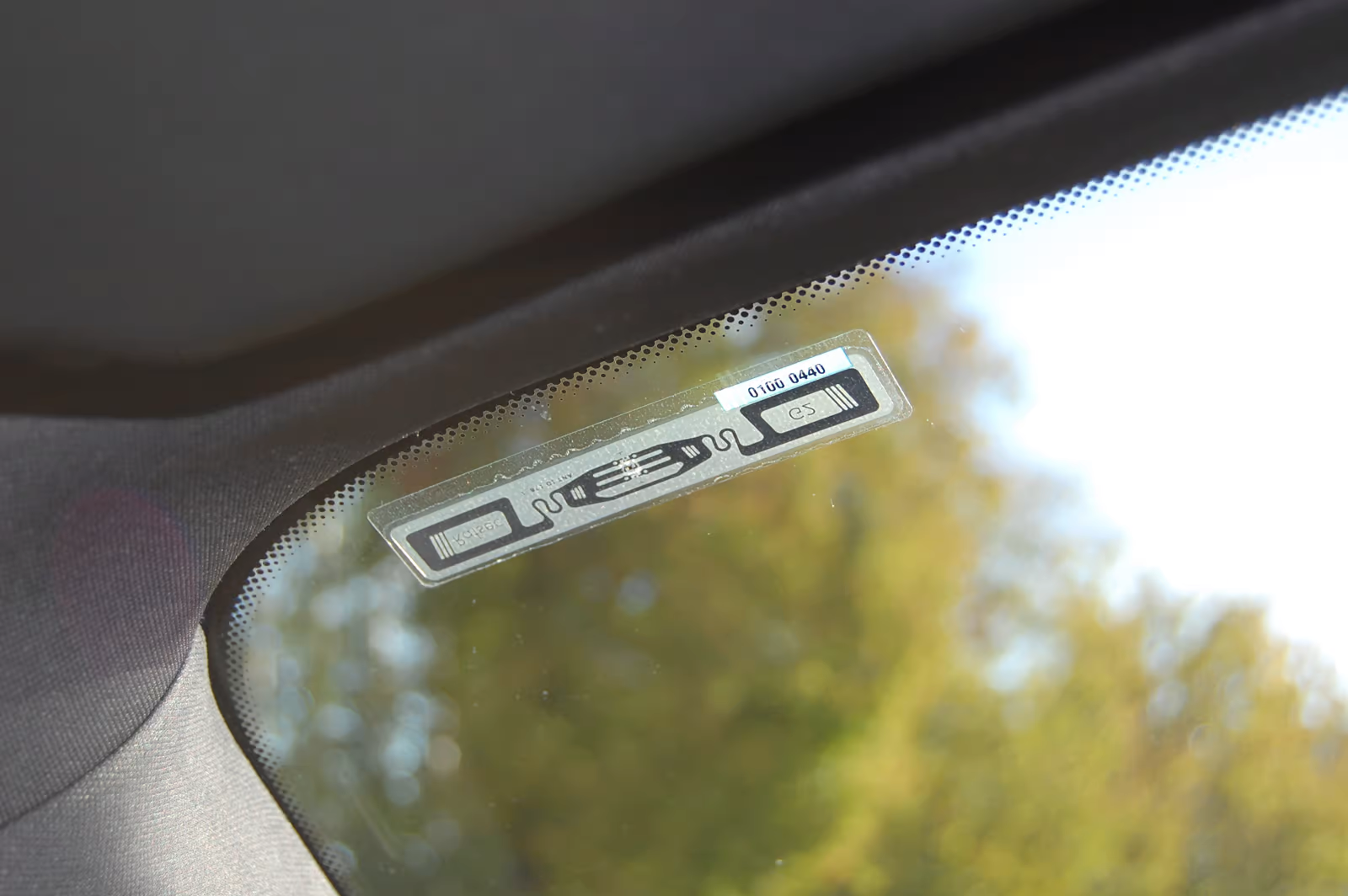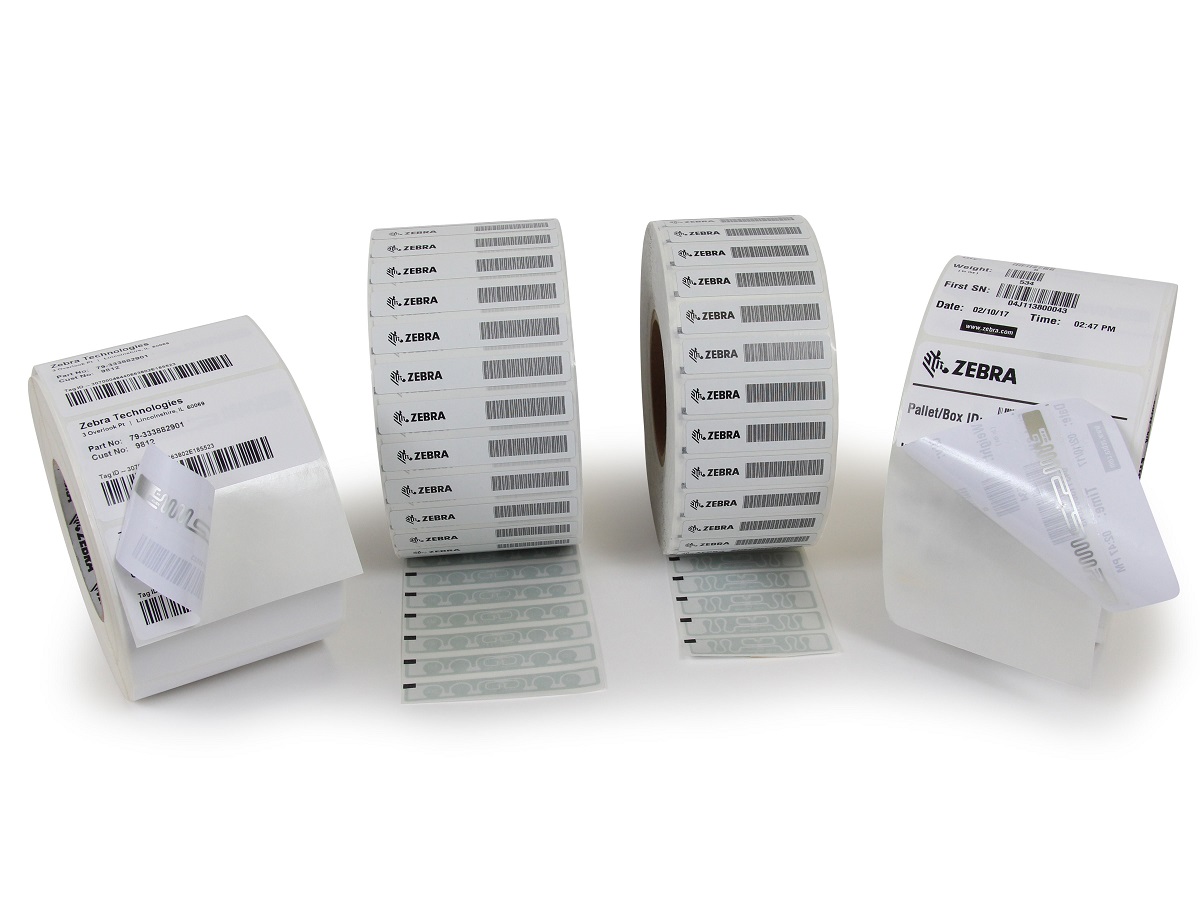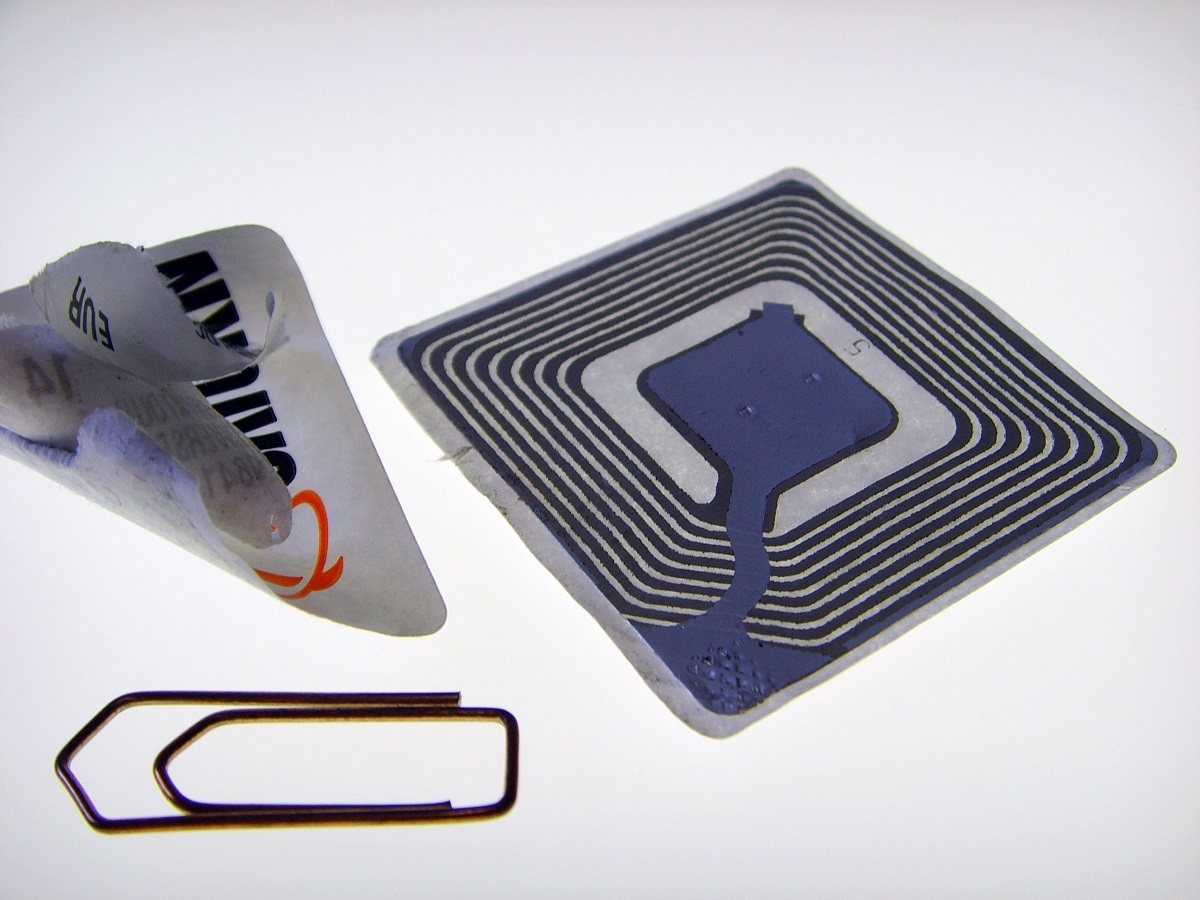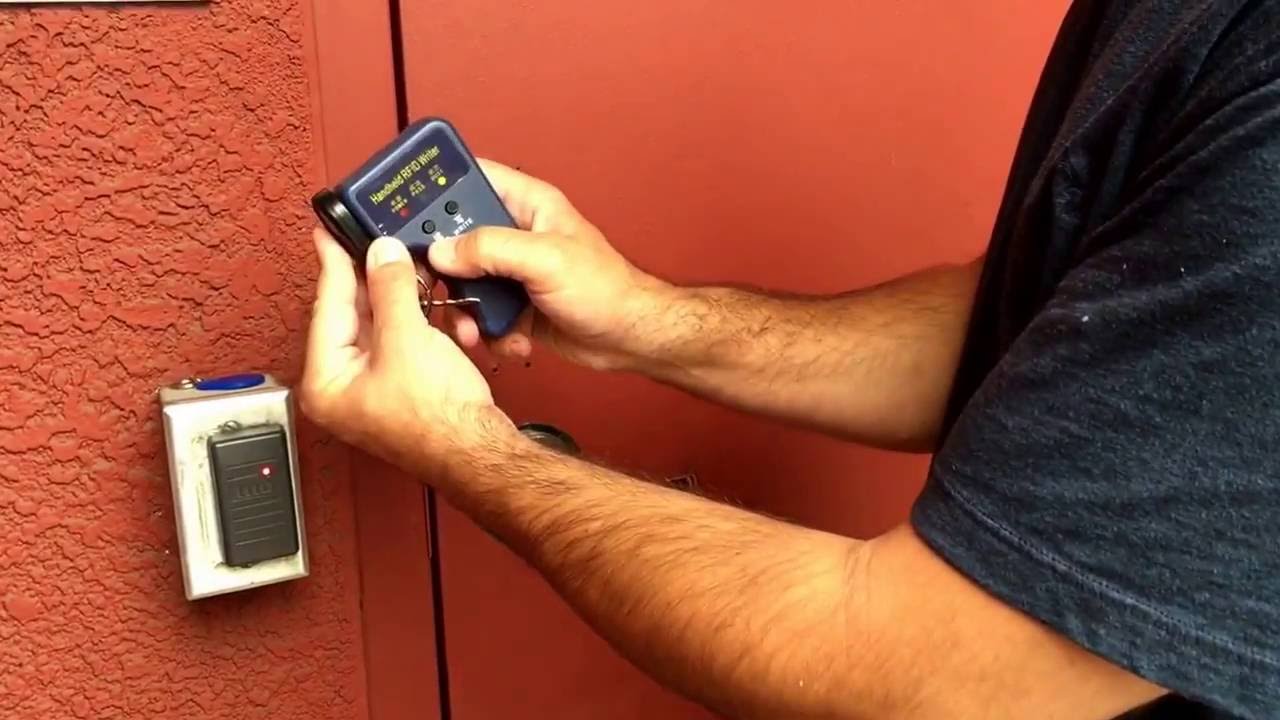Introduction
Radio Frequency Identification (RFID) technology has revolutionized the way we track and manage inventory, access control, and various other applications. However, understanding the frequency used by an RFID system is crucial for its effective implementation. RFID frequencies can vary, and it is important to identify the specific frequency being used to ensure compatibility and optimal performance.
In this article, we will explore the different RFID frequencies, namely Low Frequency (LF), High Frequency (HF), and Ultra High Frequency (UHF), and discuss various methods to find the frequency of an RFID system. By understanding these concepts and employing the right methods, you will be able to determine the RFID frequency and make informed decisions regarding your RFID implementation.
RFID frequencies are used to establish communication between an RFID tag or card and a reader. Each frequency band has its own characteristics, advantages, and limitations, making it essential to identify the frequency being utilized. This information can help troubleshoot interference issues and choose compatible equipment for RFID systems.
Throughout this article, we will equip you with the knowledge and tools necessary to identify the RFID frequency used in a system. Whether you are a business owner, an RFID systems manager, or simply curious about how these systems work, this article will provide valuable insights to help you determine RFID frequencies.
Understanding RFID Frequencies
RFID technology operates on different frequencies, each with its own benefits and applications. Understanding these RFID frequencies is crucial for effective deployment and compatibility. Let’s delve into the three main RFID frequency bands: Low Frequency (LF), High Frequency (HF), and Ultra High Frequency (UHF).
Low-Frequency (LF) RFID operates in the frequency range of 30 kHz to 300 kHz. This frequency band provides short read range capabilities, typically up to a few centimeters. LF RFID is less susceptible to interference from water, metals, and other materials, making it suitable for applications such as access control, animal tracking, and asset management.
High-Frequency (HF) RFID operates at a frequency range of 3.56 MHz to 27.25 MHz. This frequency band offers better read range compared to LF RFID, typically up to one meter. HF RFID is commonly used in applications like access control, payment systems, and inventory tracking due to its reliable and secure data transfer capabilities.
Ultra High-Frequency (UHF) RFID operates between the frequency range of 860 MHz to 960 MHz. UHF RFID boasts a longer read range, typically up to several meters, making it ideal for applications that require long-distance identification, such as supply chain management, inventory control, and toll collection systems. However, UHF frequencies are more susceptible to interference from liquids, metals, and other materials, so careful consideration is necessary during implementation.
Each RFID frequency band has its own pros and cons, and the choice of frequency depends on the specific requirements of the application. Understanding these frequencies enables businesses and organizations to select the optimal RFID system for their needs, ensuring efficient and reliable operations.
In the next section, we will discuss the methods that can help you determine the frequency being used in an RFID system. These methods will assist you in accurately identifying the RFID frequency and making informed decisions regarding your RFID implementation.
Differentiating between LF, HF, and UHF
Understanding the differences between Low Frequency (LF), High Frequency (HF), and Ultra High Frequency (UHF) is crucial for selecting the right RFID system for your specific needs. Let’s explore the characteristics and applications of each frequency band.
Low-Frequency (LF) RFID operates at frequencies between 30 kHz and 300 kHz. LF RFID systems typically have a shorter read range, usually up to a few centimeters. The lower frequency allows LF RFID to penetrate materials like water and metal, making it suitable for applications such as access control, animal tracking, and asset management. LF RFID tags are also known for their durability, making them suitable for harsh environments.
High-Frequency (HF) RFID operates at frequencies ranging from 3.56 MHz to 27.25 MHz. HF RFID systems provide a medium read range, typically up to one meter. HF RFID is widely used in applications such as access control, payment systems, and inventory tracking. HF RFID tags are known for their enhanced security features, making them suitable for applications that require secure data transmission, such as public transportation and contactless payment.
Ultra High-Frequency (UHF) RFID operates in the range of 860 MHz to 960 MHz. UHF RFID systems offer a longer read range, typically up to several meters. UHF RFID is commonly used in supply chain management, inventory control, and retail applications due to its ability to identify multiple tags simultaneously. However, UHF RFID can be affected by interference from liquids, metals, and other materials, so careful consideration is necessary during implementation.
The choice between LF, HF, and UHF RFID frequencies depends on various factors, including the required read range, the presence of interfering materials, and the specific application requirements. Analyzing these factors helps organizations make an informed decision and select the most suitable frequency for their needs.
Now that we have covered the differences between LF, HF, and UHF frequencies, let’s explore the methods that can be utilized to identify the specific RFID frequency being used in a system. These methods will provide you with the necessary tools to accurately determine the RFID frequency and proceed with your RFID implementation.
Methods to Find RFID Frequency
Determining the frequency of an RFID system is essential for compatibility and troubleshooting. Thankfully, there are several methods available to help identify the specific frequency being utilized. Let’s explore five commonly used methods to find RFID frequency.
1. Consult the RFID Tag or Card: The RFID tag or card itself often provides information about the frequency it operates on. Look for manufacturer labels, markings, or datasheets that specify the frequency. This method is straightforward and can quickly provide the necessary details.
2. Use an RFID Reader: RFID readers are designed to operate on specific frequencies. By using an RFID reader that is compatible with multiple frequency bands, you can identify the frequency of an RFID system by simply scanning the tag or card. The reader will detect the tag’s frequency, allowing you to determine the operating frequency of the system.
3. Utilize an RFID Signal Analyzer: An RFID signal analyzer is a specialized device that can analyze and interpret the signals transmitted by RFID tags and readers. By using an RFID signal analyzer, you can capture and analyze the frequency information of the RFID signal, helping you identify the specific frequency being used.
4. Employ an RF Spectrum Analyzer: An RF spectrum analyzer is a versatile tool used in wireless communication analysis. It can display and analyze the signals present in a specific frequency range. By scanning the frequency band used by the RFID system with an RF spectrum analyzer, you can identify the RFID frequency by looking for the characteristic signal pattern associated with RFID devices.
5. Analyze the RFID Chip Datasheet: If you have access to the RFID chip datasheet, it will often provide vital information about the frequency range it operates on. By carefully reviewing the datasheet information, including the operating frequency, you can identify the specific RFID frequency.
These methods provide effective ways to identify the RFID frequency being used in a system. It is advisable to employ more than one method to cross-validate the results and ensure accuracy. By determining the RFID frequency, you can make informed decisions regarding the selection of compatible equipment and troubleshoot any interference issues that may arise during implementation.
Method 1: Consult the RFID Tag or Card
One of the simplest and most straightforward methods to find the RFID frequency is by consulting the RFID tag or card itself. Many RFID tags and cards come with manufacturer labels, markings, or datasheets that specify the frequency they operate on. By examining these labels or datasheets, you can quickly identify the frequency being used in the RFID system.
When inspecting the RFID tags or cards, look for any information related to the frequency. This may include markings like “LF” for Low Frequency, “HF” for High Frequency, or “UHF” for Ultra High Frequency. Some tags or cards may also explicitly state the specific frequency range, such as “13.56 MHz” for HF or “915 MHz” for UHF.
In addition to labels and markings, the manufacturer datasheet is a valuable resource. It provides comprehensive technical information about the RFID tag or card, including details about the operating frequency. The datasheet may specify the frequency range, frequency modulation, or other relevant frequency-related information.
Consulting the RFID tag or card can be a quick and reliable method to determine the frequency. However, it is important to ensure that the information obtained from the tag or card matches the actual frequency being used in the system. This is especially crucial when dealing with older or tampered tags, where the frequency labeling may not be accurate.
Keep in mind that this method is best used when you have direct access to the RFID tags or cards. If you are working with a system that has a large number of tags deployed across multiple locations, it may not be practical to physically inspect each tag individually. In such cases, alternative methods discussed in later sections can provide a more efficient means of identifying the RFID frequency.
By consulting the RFID tag or card, you can gather vital information about the operating frequency of the RFID system. This knowledge enables you to ensure compatibility with other RFID equipment and make informed decisions regarding your RFID implementation.
Method 2: Use an RFID Reader
Another effective method to determine the RFID frequency is by using an RFID reader. RFID readers are designed to operate on specific frequency bands, making them perfect tools for identifying the frequency used in an RFID system.
To use this method, you will need an RFID reader that is capable of scanning multiple frequency bands. Start by connecting the RFID reader to a power source and ensuring that it is properly initialized. Then, place the RFID tag or card within the reading range of the reader.
The RFID reader will emit radio waves, known as an interrogation signal, to communicate with the RFID tag or card. The tag or card responds with its unique identification information, and the reader decodes this information. During the communication process, the RFID reader detects and operates on the same frequency as the RFID tag or card.
By analyzing the reader’s settings or software interface, you can extract information about the frequency being used. Most RFID readers provide options to display the frequency range or the specific frequency band selected. This information can help you identify whether the system is operating on Low Frequency (LF), High Frequency (HF), or Ultra High Frequency (UHF).
Keep in mind that this method requires a compatible RFID reader that supports the frequency range used in your RFID system. Ensure that the reader is set to the appropriate frequency before conducting the scan. If the RFID reader offers multi-frequency scanning capabilities, it allows you to determine the specific frequency being used.
Using an RFID reader is a reliable method to find the RFID frequency as it directly communicates with the tags or cards within the system. However, this method may be time-consuming if you are working with a large number of tags or cards spread across different locations. In such cases, other methods mentioned in this article can provide a more efficient means of identifying the RFID frequency.
By utilizing an RFID reader, you can accurately determine the RFID frequency and ensure compatibility with other RFID devices. This information is vital for selecting the appropriate equipment and optimizing the performance of your RFID system.
Method 3: Utilize an RFID Signal Analyzer
An RFID signal analyzer is a specialized device that helps in analyzing and interpreting the signals transmitted by RFID tags and readers. This method offers a comprehensive and in-depth approach to identify the specific frequency being used in an RFID system.
To utilize an RFID signal analyzer, you will need to connect it to the RFID system under investigation. The signal analyzer will capture and analyze the RFID signals, allowing you to extract detailed information about the frequency and other relevant parameters.
Once connected, the RFID signal analyzer will scan the frequency spectrum used by the RFID system, often displaying a graphical representation of the signal characteristics. By analyzing the signal patterns and properties, you can identify the specific frequency band being employed.
An RFID signal analyzer provides more than just frequency information. It can also provide details on signal strength, modulation schemes, and other important parameters that can aid in determining the RFID frequency.
When using an RFID signal analyzer, ensure that it supports the appropriate frequency range used by the system you are analyzing. Different signal analyzers may have different capabilities and frequency coverage, so select a device that aligns with your specific requirements.
Utilizing an RFID signal analyzer offers a comprehensive and accurate method for identifying the RFID frequency. It eliminates guesswork and provides precise measurements and analysis of the signal characteristics. However, due to the specialized nature of RFID signal analyzers, they may not be readily available or easily accessible for everyone.
In situations where you don’t have access to an RFID signal analyzer, or if it is not feasible to use one, you can consider alternative methods discussed in this article to find the RFID frequency effectively.
By utilizing an RFID signal analyzer, you can get valuable insights into the frequency and parameters of the RFID signals, helping you accurately determine the RFID frequency for your system.
Method 4: Employ an RF Spectrum Analyzer
Employing an RF spectrum analyzer is another effective method to find the frequency of an RFID system. An RF spectrum analyzer is a versatile tool used in wireless communication analysis, capable of displaying and analyzing signals present in a specific frequency range. By utilizing an RF spectrum analyzer, you can identify the RFID frequency by looking for the characteristic signal pattern associated with RFID devices.
To use this method, start by connecting the RF spectrum analyzer to the RFID system under investigation. Set the analyzer to scan the frequency range commonly used by RFID systems, which may vary depending on the specific frequency band (LF, HF, or UHF) being targeted.
Once the RF spectrum analyzer is configured, it will scan the frequency spectrum and display the signals present in the selected range. By observing the spectrum analyzer’s graphical representation, you can identify any signal peaks or patterns that indicate the presence of RFID signals operating at a particular frequency.
To confirm that the identified signal corresponds to the RFID system frequency, you can compare it with known RFID frequency bands. For example, LF RFID is typically found in the range of 30 kHz to 300 kHz, while HF RFID is commonly between 3.56 MHz and 27.25 MHz. UHF RFID operates around 860 MHz to 960 MHz. Matching the detected signal with the expected frequency range will allow you to accurately determine the RFID frequency of the system.
The accuracy and reliability of this method depend on the sensitivity and capabilities of the RF spectrum analyzer. Ensure that the analyzer supports the frequency range being targeted for the RFID system. It is also important to interpret the signals correctly and consider any interference or noise that may affect the results.
Employing an RF spectrum analyzer provides a powerful means to identify the RFID frequency by visually inspecting the signal patterns in the frequency spectrum. However, it may require technical expertise and access to specialized equipment. In situations where an RF spectrum analyzer is not available, other methods discussed in this article can offer practical alternatives to determine the RFID frequency.
By utilizing an RF spectrum analyzer, you can accurately identify the RFID frequency and gain valuable insights into the signal characteristics of the RFID system under investigation.
Method 5: Analyze the RFID Chip Datasheet
Analyzing the RFID chip datasheet is an effective method to determine the RFID frequency of a system. The datasheet provides comprehensive technical information about the RFID chip, including details about its operating frequency.
To use this method, you will need access to the datasheet of the RFID chip used in your system. The datasheet is typically provided by the chip manufacturer and contains detailed specifications and features of the chip.
Carefully review the datasheet and look for information related to the operating frequency. The datasheet should specify the frequency range or the specific frequency band supported by the RFID chip. It may also provide details about frequency modulation schemes, subcarrier frequencies, or other frequency-related parameters.
Pay attention to sections such as “Electrical Characteristics,” “Operating Conditions,” or a dedicated “Frequency” section within the datasheet. In these sections, you can often find the specific range or values associated with the RFID frequency supported by the chip.
It is important to note that the RFID chip datasheet provides information about the capabilities of the chip itself. While this is a reliable source to determine the supported frequency range, it is still essential to cross-validate the information with the actual frequency being used in the RFID system.
By analyzing the RFID chip datasheet, you can identify the supported frequency range and make an informed assessment of the RFID frequency being used in the system. This knowledge is valuable for selecting compatible devices, troubleshooting compatibility issues, and ensuring optimal performance in your RFID implementation.
In situations where access to the datasheet is restricted or unavailable, alternative methods discussed in this article can be utilized to identify the RFID frequency effectively.
By analyzing the RFID chip datasheet, you can gather vital information about the supported frequency range of the RFID chip, assisting you in accurately determining the RFID frequency for your system.
Conclusion
Identifying the RFID frequency used in a system is crucial for compatibility, troubleshooting, and optimal performance. Throughout this article, we have explored various methods to find the RFID frequency.
Consulting the RFID tag or card provides a quick and straightforward method to determine the frequency. Labels, markings, and datasheets often contain information about the frequency bands, enabling users to identify the RFID frequency with ease. Using an RFID reader allows direct communication with the tags or cards, extracting information about the operating frequency from the reader’s settings or software interface.
Utilizing specialized tools such as RFID signal analyzers and RF spectrum analyzers provides more in-depth analysis of the RFID signals, helping identify the specific frequency band and other relevant parameters. Analyzing the RFID chip datasheet provides valuable information about the supported frequency range of the RFID chip, aiding in determining the operating frequency of the system.
By employing these methods, businesses and organizations can accurately identify the RFID frequency, ensuring compatibility with other RFID devices, troubleshooting interference issues, and optimizing the performance of their RFID systems.
It is important to note that some methods may require access to specific equipment or technical expertise. In situations where certain methods are not feasible, alternative methods can be used to achieve accurate results.
In conclusion, understanding and determining the RFID frequency is essential for successful RFID implementation. By utilizing the methods outlined in this article and considering the specific requirements of your system, you can confidently select compatible equipment, troubleshoot any issues, and leverage the capabilities of RFID technology to enhance your operations.







